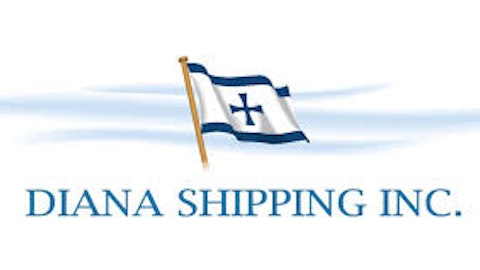Over the past couple of years, the shipping industry has been engulfed in an endless spiral of macroeconomic headwinds and slashed daily rates. Last year, the Baltic Dry Index, the barometer that gauges the cost of shipping dry bulk commodities around the globe, hit rock-bottom levels smashing every glimmer of hope for an industry recovery.
However, Greek ship owners, who more or less hold the reins of the shipping industry, primed the pump by acquiring new dry bulk carriers. Recently, Greek-based ship broker Golden Destiny pointed out that, during the most recent quarter, Greek shippers bought twice as many Capesize vessels as they did in all of last year.
Given the disturbing overcapacity that has been giving the industry a splitting headache for quite some time now, I can’t help but wonder: Are these Greeks crazy?
What’s going on?
Ship yards all over the world, and more specifically in China, must be feeling pretty excited with how strongly 2013 has started off. During the first three months of 2013, 471 new orders were placed marking a 43% year-over-year lift in ship owners’ demand for advanced and eco-friendly vessels. Golden Destiny says that, for the period, Greek shippers ordered 41 vessels, of which 12 were dry bulk carriers. In particular, new orders for the mammoth Capesize vessels almost doubled to 3.8 million dead weight tonnage (dwt).
So, why this sudden itch for new dry bulk vessels? Perhaps, ship owners have a hunch that the dry bulk market might be coming back from the dead. After all, since the start of the year, freight rates have shown an eye-catching upturn. According to the latest data from shipbroker RS Platou, average spot rates for Panamax ships increased from $5,500 per day at the start of 2013 to around $9,000 at the end of last month. Over the same period, average daily earnings on the spot market for Handysize and Supramax vessels jumped from $6,000 and $7,000, respectively, to $8,000 and $9,500. Average spot rates in the Capesize sector went downhill during March, but bounced back nicely to $6,300 at the end of April.

Navios Maritime Partners L.P. (NYSE:NMM) ended the quarter with considerable strength in quarterly revenue and operating surplus – the number one indicator for the sustainability of its double-digit dividend yield. The stock is trading at around $15, up by 22% year-to-date, and, recently got the thumbs up from The Street, as well as from analysts at RBC Capital, who raised their target price from $16.00 to $17.00.
Diana Shipping Inc. (NYSE:DSX) – the owner of 33 dry bulk vessels – gets four (out of five) stars from The Motley Fool CAPS Community. The stock has rallied as much as 35% since January urging Bloomberg’s analysts to make a bullish call.
Over the past couple of years, its comparably clean balance sheet enabled Diana Shipping Inc. (NYSE:DSX) to open its pockets and multiply its fleet’s capacity. It focused mainly on acquiring second-hand vessels and entering right away into short to medium-term time charters. But, so far, this strategy has taken a toll on its revenue given the depressed charter rates. The majority of its contracts will expire next year, and if rates have not improved substantially by then, things might get pretty ugly for this shipper.



